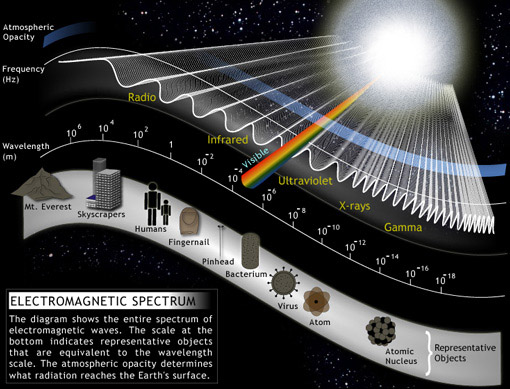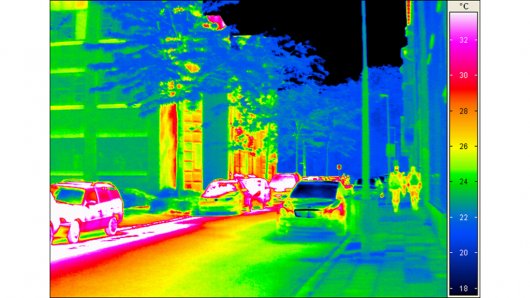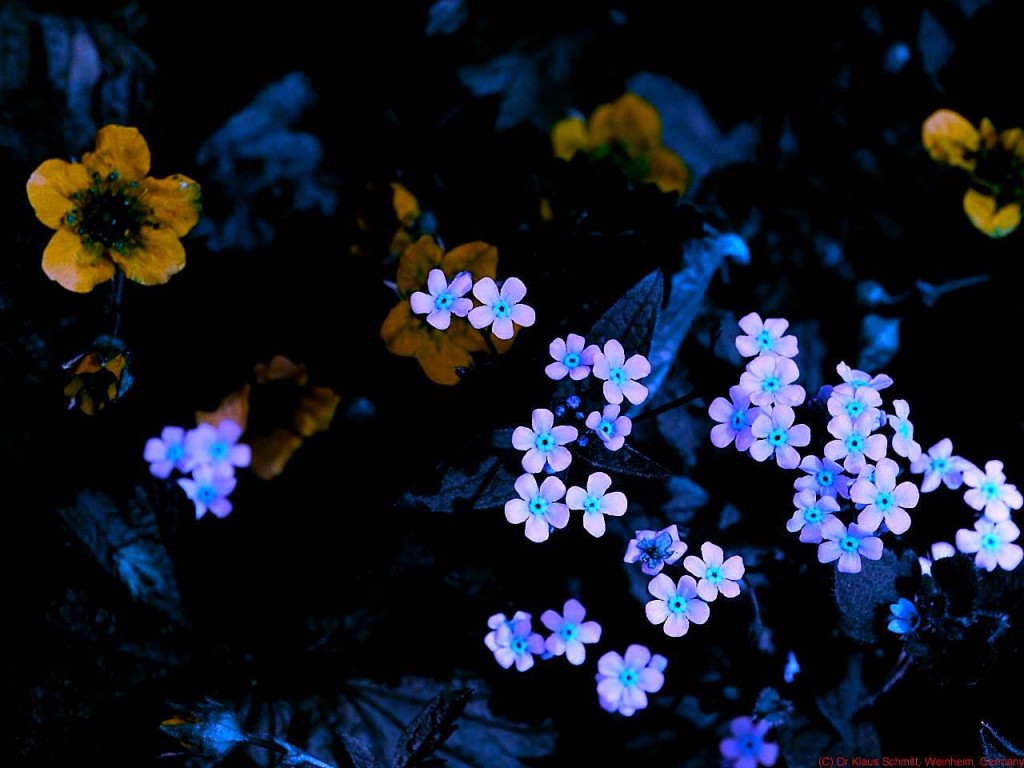We are constantly bombarded by electromagnetic waves of all different types, as you can see in the image above. Our eyes and brains can interpret only a tiny portion of that spectrum, visible light. What we experience when we see visible light is different colors.
First of all, think of how incredible it is that we only perceive a very small portion of the electromagnetic spectrum. Visible light is just one small range of wavelengths. That means there’s a lot we’re not perceiving. What if other creatures could perceive the other wavelengths in a way similar to how we perceive visible light? Of course there’s no way really to describe how something would look in infrared or ultraviolet (not to mention radio or gamma) because, like visible light (and everything else in the world), it’s something that has to be experienced to be understood.
But just for fun, here’s how something might appear to us in infrared:
And ultraviolet:
Obviously, these are very different ways to experience Earth. However, even as humans who can only perceive the visible light range of the electromagnetic spectrum, some of us may have quite different experiences of the same wavelengths. It’s possible that some of us see an inverted spectrum, meaning some people experience the “opposite” colors that you experience. In the picture below, the fruit bowl on the left looks normal to you. But theoretically, some people would look at the picture on the left and see what you see when you look at the picture on the right. And their whole world is that way.
What a different way to experience Earth, right? Because all we can do is identify wavelengths, not their corresponding color experiences, we can never know whether or not some people see an inverted spectrum. Our individual, unique experience of certain wavelengths is not something others can experience, as is the case with all other personal experiences. I wrote about this here, that reality is subjective.
We all refer to the same wavelengths of visible light with the same color names, but we may be having very different experiences of those same colors. I wonder if maybe that’s why some people are nature lovers and others aren’t so much. When I look out at the green trees and grass and the light blue sky and the pink and orange clouds, it strikes me as amazingly beautiful. If all of the colors were reversed, I seriously doubt it would be as awe-inspiring as my normal experience. Maybe that’s why some people aren’t as awestruck by nature as I am.
If each of us can have a vastly different experience of something as seemingly objective as color, think of how very different our experiences can be from others’ with regard to world events, to people, to places. All of our past life experience filters our current stimuli much like our eyes and brains filter the light to create a color experience. And since no two life experiences are the same, two people can have highly divergent, equally valid experiences of the exact same event or person or place. Simply recognizing this fact makes it easier not to be so judgmental of others, easier to be a bit more open-minded. Maybe if you had a less different life from someone else, you’d see things the same way.





Comments
2 responses to “Inverted Spectrum”
[…] I don’t think there’s some human-like, all-powerful god watching over us. But I do think reality goes far beyond what we’re aware of, meaning we’re not aware of the true grand scheme of things. Things that seem bad or senseless very well could, and probably do have reasons beyond our comprehension. This is still assuming “good” and “bad” are real. Maybe there is no such duality as good/bad or good/evil. Maybe the duality is imagined, a product of our human minds, much like time, solidity, and colors. […]
[…] portion of the electromagnetic spectrum is but a tiny slice of the entire thing, which I discussed here. Maybe the visible portion of a possible spectrum of matter is just a tiny sliver of the full […]